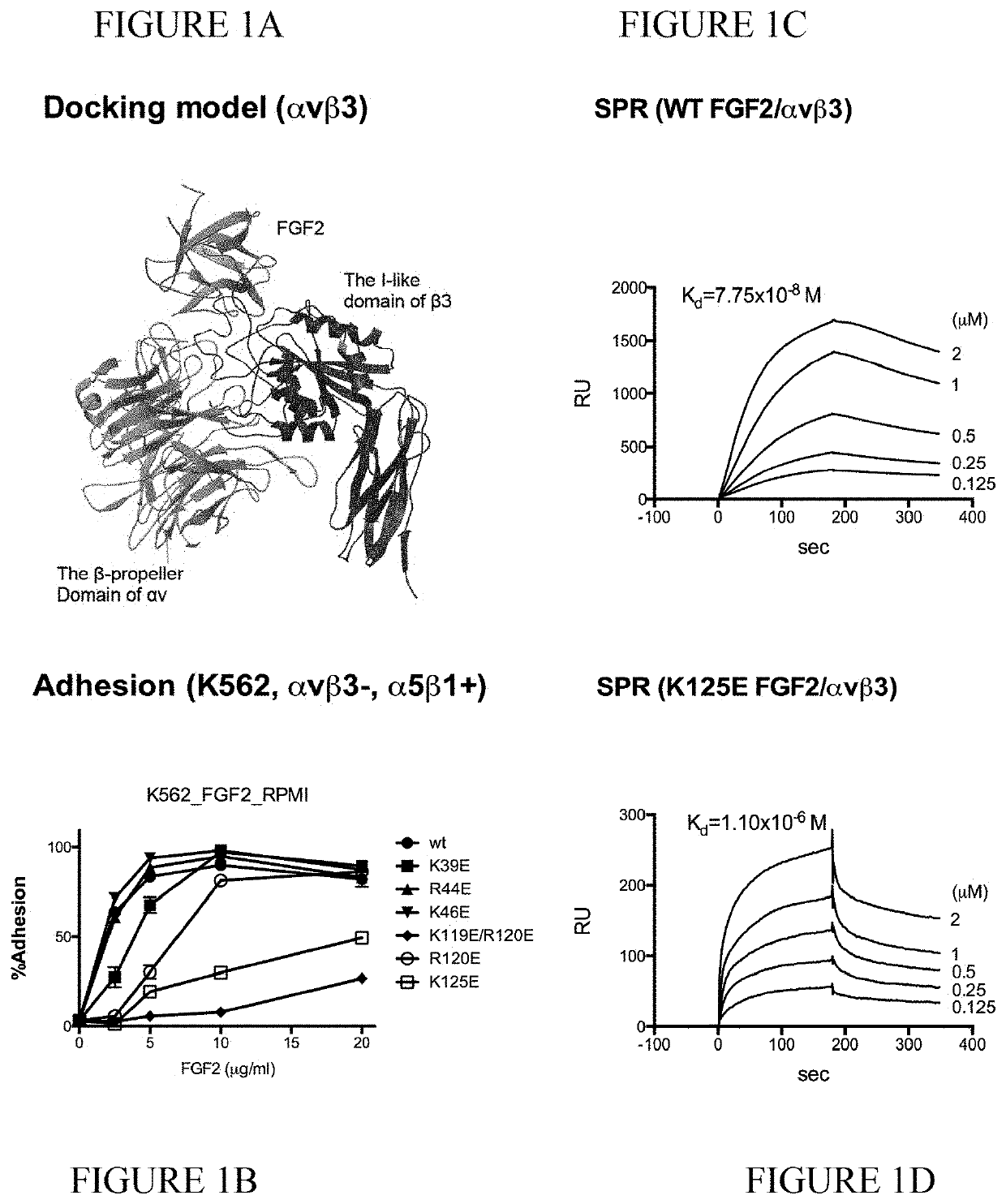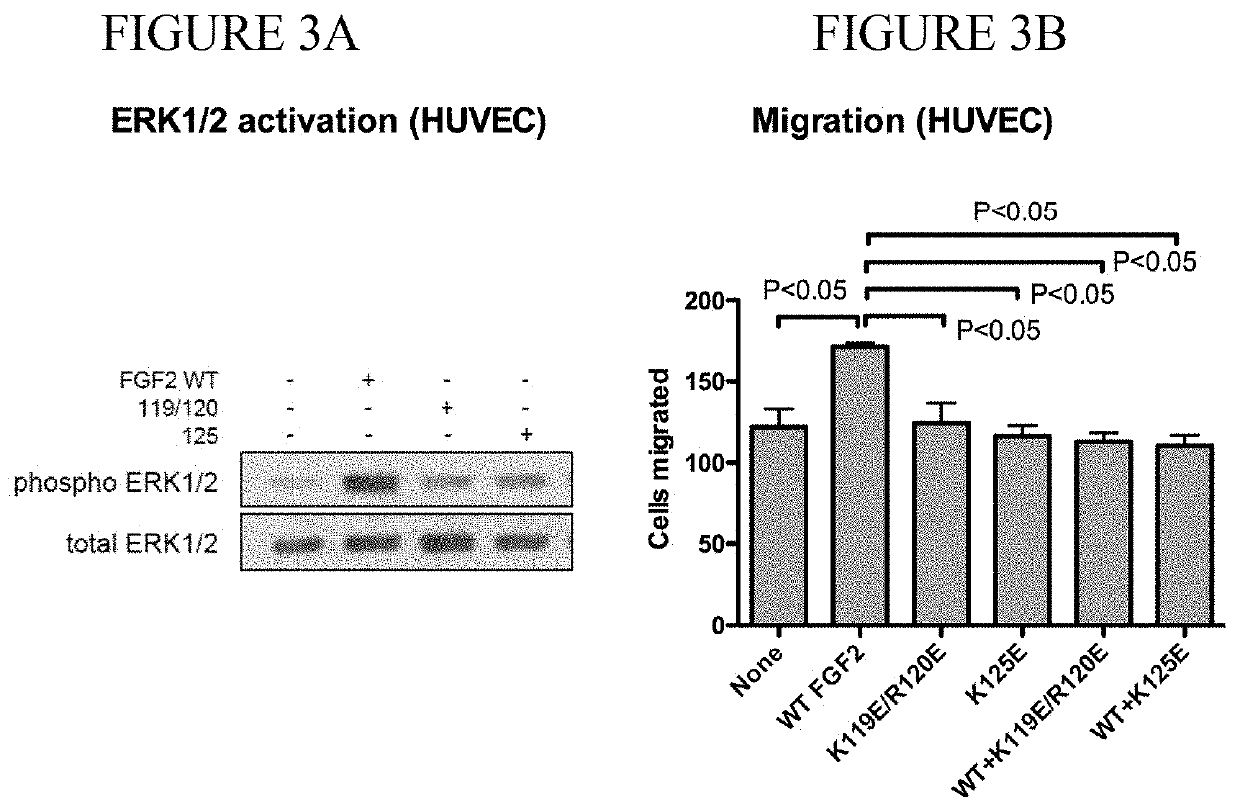Dominant-negative FGF2 antagonists
a technology of fgf2 and antagonists, which is applied in the direction of peptides, drug compositions, peptides, etc., can solve the problems that the binding of fgf to fgfr is not sufficient to induce fgf signals, and achieve the suppression of fgf2 signaling, suppressing fgf2 signaling, and suppressing fgf2 signaling
- Summary
- Abstract
- Description
- Claims
- Application Information
AI Technical Summary
Benefits of technology
Problems solved by technology
Method used
Image
Examples
example 1
Introduction
[0124]The fibroblast growth factor (FGF) family consists of 22 related polypeptides that are expressed in almost all tissues and are multifunctional. Some FGFs, like FGF1 and FGF2, have potent angiogenic activity and are implicated as promoters of angiogenesis, the formation of new blood vessels, in cancer and chronic inflammatory diseases [1-3]. FGFs also increase the motility and invasiveness of a variety of cell types. The biological effects of FGFs are mediated by four structurally related receptor tyrosine kinases: Fibroblast growth factor receptor-1 (FGFR1), FGFR2, FGFR3, and FGFR4. The binding of FGF to its receptor results in receptor dimerization and subsequent autophosphorylation of specific tyrosine residues within the intracellular domain. This leads to the activation of intracellular signaling cascades. Integrins are a family of cell adhesion receptors that recognize extracellular matrix (ECM) ligands and cell surface ligands [4]. Integrins are transmembrane...
PUM
| Property | Measurement | Unit |
|---|---|---|
| pH | aaaaa | aaaaa |
| pH | aaaaa | aaaaa |
| weight | aaaaa | aaaaa |
Abstract
Description
Claims
Application Information
 Login to View More
Login to View More - R&D
- Intellectual Property
- Life Sciences
- Materials
- Tech Scout
- Unparalleled Data Quality
- Higher Quality Content
- 60% Fewer Hallucinations
Browse by: Latest US Patents, China's latest patents, Technical Efficacy Thesaurus, Application Domain, Technology Topic, Popular Technical Reports.
© 2025 PatSnap. All rights reserved.Legal|Privacy policy|Modern Slavery Act Transparency Statement|Sitemap|About US| Contact US: help@patsnap.com



